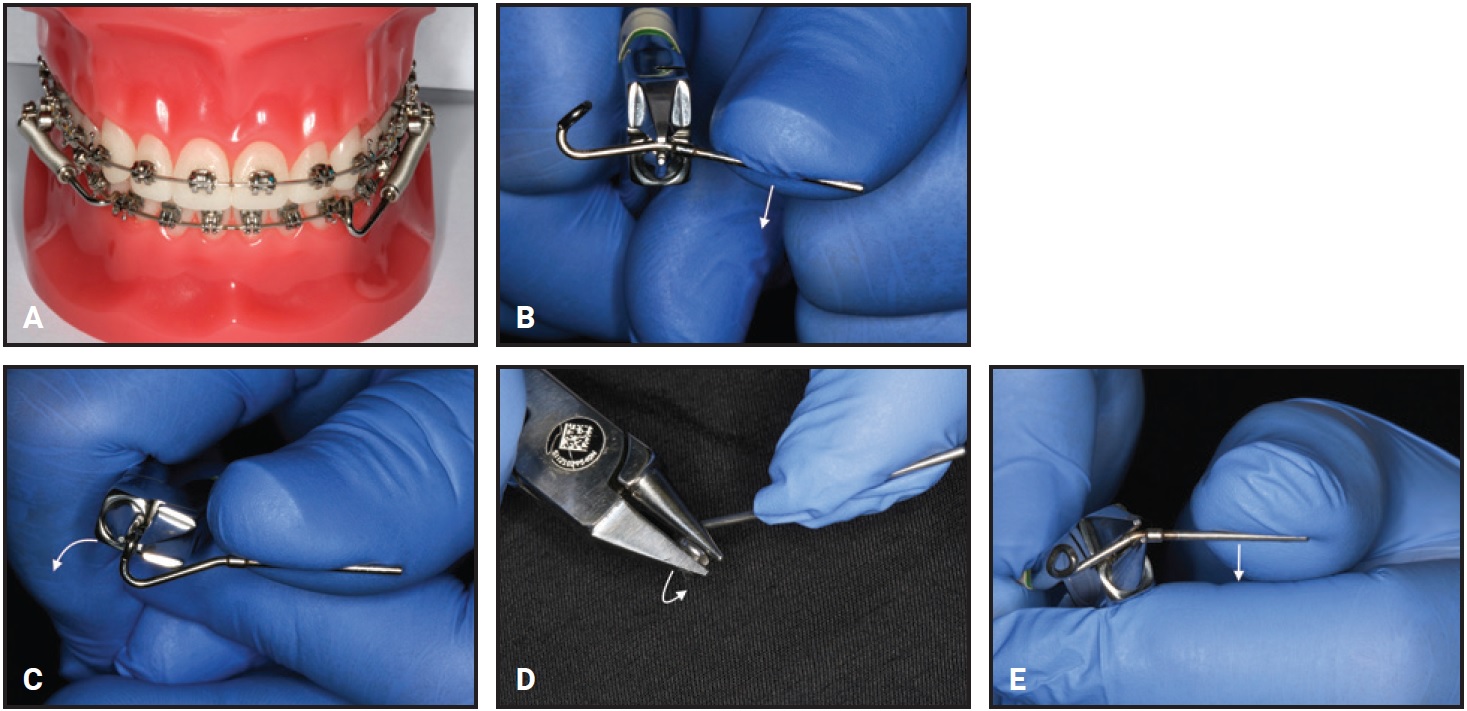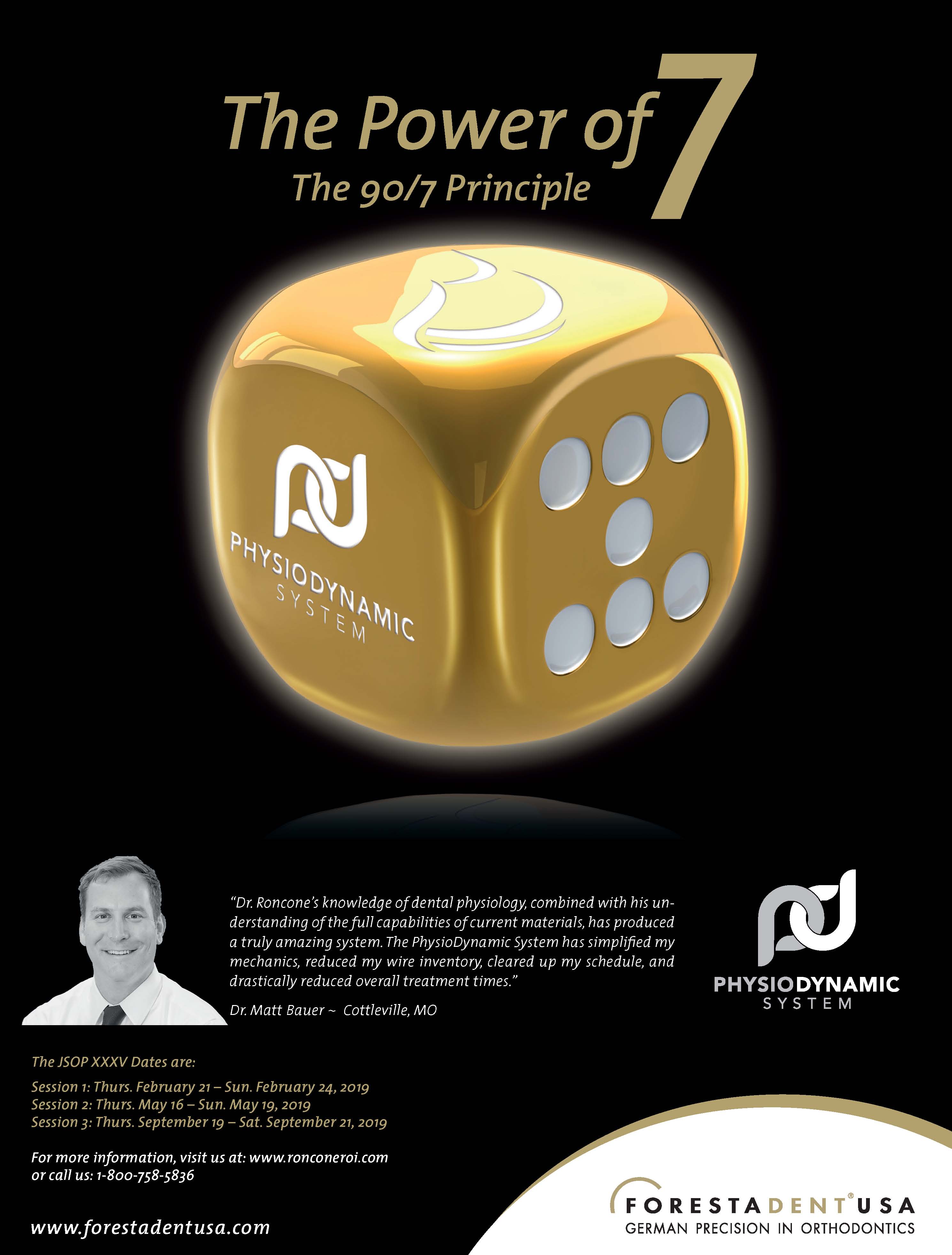TECHNIQUE CLINIC
Prevention of Mucosal Irritation from the Forsus Fatigue Resistant Device
The Forsus Fatigue Resistant Device* (FFRD)is a fixed hybrid functional appliance used in the correction of Angle Class II malocclusions. The FFRD is attached by means of a spring connected to the upper first molar headgear tube and a push rod connected to the lower archwire, distal to the canine or first premolar.1-4
Recent studies have reported some discomfort and functional limitations in patients treated with the FFRD, but these issues normally resolve over time. The most serious problems have been mucosal irritation and traumatic ulcers, usually from the rod protruding toward the cheek, especially during the first months of treatment.1,5,6
This article describes a simple modification that directs the push rods downward into the vestibule of the cheek, eliminating or reducing soreness and traumatic ulcers. The conventional FFRD is pictured on the patient’s right side and the modified device on the left, illustrating the diminished lateral projection of the rod (A).
Technique
1. Hold the rod with a plier, just past the stop on the side closer to the loop. Bend the rod so the flat top of the loop aligns with the first section of the rod (B).
Similar articles from the archive:
- PEARLS Preventing Delays in Forsus Treatment after Canine Bracket Failure February 2013
- PEARLS Rotation Wedges for Forsus Treatment December 2010
- PEARLS Precise Insertion of the Forsus Fatigue Resistant Device September 2010
FOOTNOTES
- *Trademark of 3M Unitek, Monrovia, CA; www.3Munitek.com.
REFERENCES
- 1. Bowman, A.C.; Saltaji, H.; Flores-Mir, C.; Preston, B.; and Tabba, S.: Patient experiences with the Forsus Fatigue Resistant Device, Angle Orthod. 83:437-446, 2013.
- 2. Jung, M.H.: Effective mechanics for vertical control with the Forsus Fatigue Resistant Device, J. Clin. Orthod. 49:378-387, 2015.
- 3. Aras, I. and Pasaoglu, A.: Class II subdivision treatment with the Forsus Fatigue Resistant Device vs intermaxillary elastics, Angle Orthod. 87:371-376, 2017.
- 4. Jung, M.H.: The Forsus Fatigue Resistant Device in premolar-extraction treatment, J. Clin. Orthod. 49:533-537, 2015.
- 5. Elkordy, S.A.; Fayed, M.M.; Abouelezz, A.M.; and Attia, K.H.: Comparison of patient acceptance of the Forsus Fatigue Resistant Device with and without mini-implant anchorage: A randomized controlled trial, Am. J. Orthod. 148:755-764, 2015.
- 6. Tian, X.G.; Wu, Z.Z.; Zhang, S.J.; Zhang, M.; and Lin, X.J.: Patients’ experiences with the Forsus appliance [in Chinese], Shanghai Kou Qiang Yi Xue 23:209-213, 2014.





